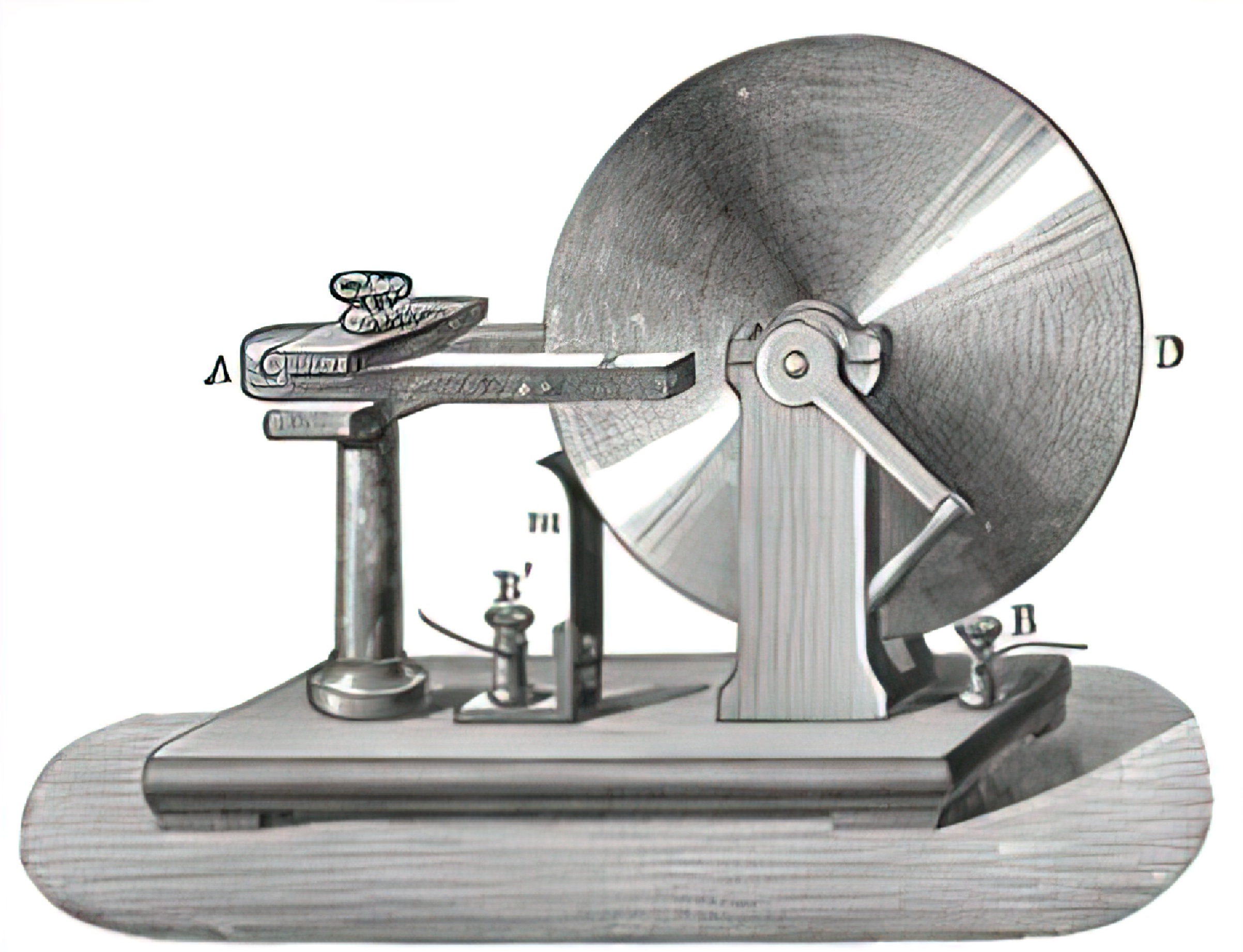
In the Faraday unipolar generator "the current," as Tesla noted, "set up will therefore not wholly pass through the external circuit ... and ... by far the greater portion of the current generated will not appear externally..."(7) By having the magnet completely cover the disk, Tesla made use of the whole disk surface in current generation instead of only a small section directly adjacent to the bar magnet, as happened in the Faraday device. This not only increases the amount of current generated, but, by making the current travel from the center to the outside edge, makes all of that current accessible to the external circuit.
More importantly, these modifications on the Faraday design eliminated one of the biggest problems in any physical system - the reaction to every action. It is this reaction that works to cancel out whatever effort goes into causing the original action. In an electrical system if there are two turns of wire wound next to each other and a current is sent through the wire, the current passing through the first loop will set up a magnetic field that will work against the current passing through the second loop.
The spiral divisions in the disk cause the current to travel the full radius of the disk or, as in his alternative version of the generator, to make a full trip around the outside edge of the disk. Because the current is flowing in a large circle at the rim of the disk, the magnetic field created by the current not only does not work against the field magnet above the circular plate, as in conventional generators, but it actually reinforces the magnet. So as the disk cuts the magnetic lines to produce a current, the current coming off of the disk strengthens the magnet, allowing it to produce even more current.
Like conventional direct current generators, the unipolar dynamo also functions as a motor if current is put into the disk while under the magnet, and this seems to be the last element that could make the device self-sustaining, that is, capable of generating a current after being disconnected from an outside source of movement like falling water or steam. [Analysis of how current flows. Electric Circuits, The work of Wheatstone, Ohm, and Kirchhoff, Produced by the California Institute of Technology 1985.]
See Also
Electricity
Ether Generator
Ether Generator Producing High Pressures
Faraday
Figure 13.02a - Etheric Vapor HHO Generator
Generator
Keelys Etheric Generator or Liberator
Magnetism
motionless electromagnetic generator
Russells Optic Dynamo-Generator
signal generator
unipolar
